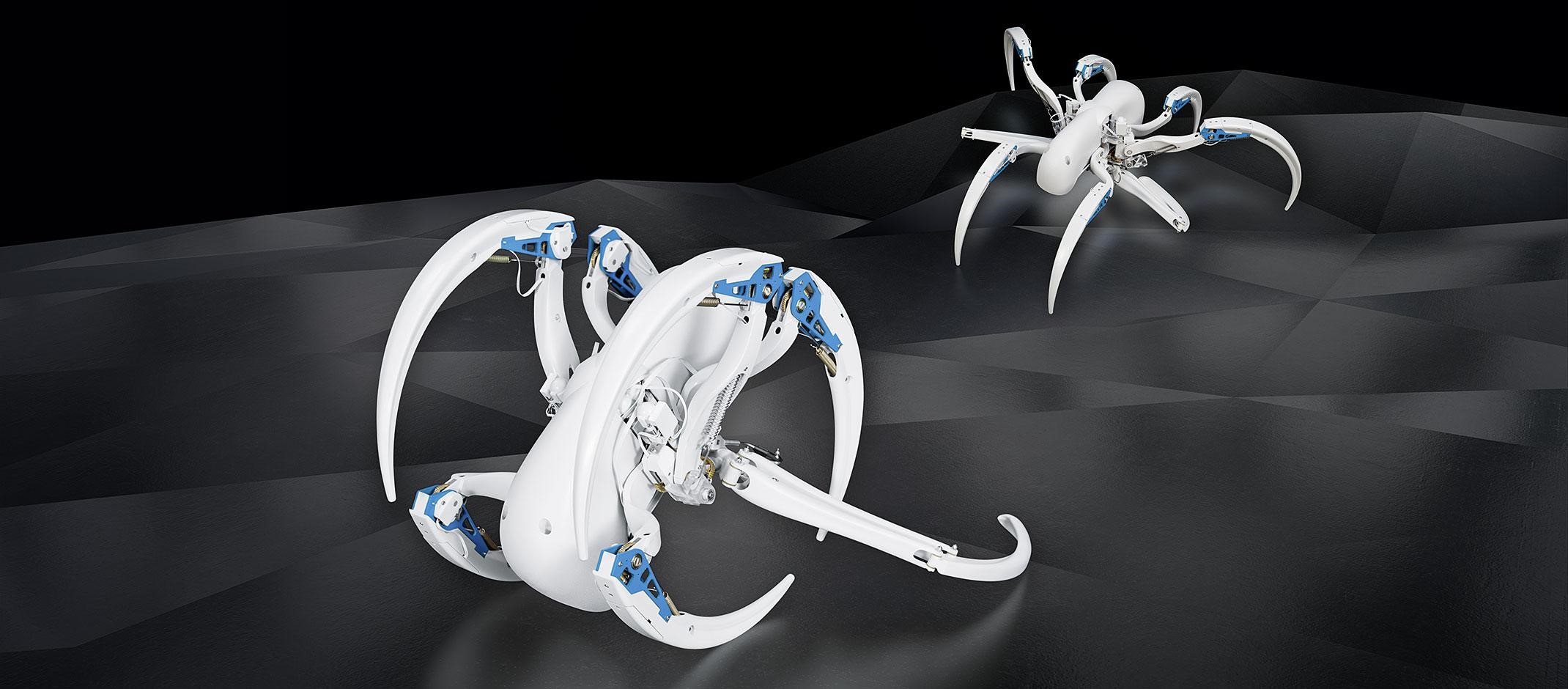
By Heather Hamilton, contributing writer
Festo, a German automation company, recently introduced the BionicWheelBot, a robot that walks and rolls. Taking cues from nature, it is modeled after the Moroccan flic-flac spider, which walks, propels itself into the air, and somersaults and rolls on the ground.
Tech Xplore reports that Ingo Recheberg, a bionics processer at the Technical University of Berlin, was inspired by the spider in the Erg Chebbi desert (in the Sahara Desert) in 2008. Since then, Rechenberg has attempted to recreate its movement patterns in technology, allowing robots to move across a variety of potentially hazardous terrain.
Scientific American describes the move as “essentially cartwheeling to avoid danger.” A similar movement pattern has been spotted in other animals across the globe and, in the case of the flic-flac spider, is usually used to deflect predators.
Rachenberg worked with the Festo bionics team to identify specific patterns of movement, including how each of its eight legs contribute (six legs walk while two provide push-off motion and remain folded the rest of the time, if you’re curious). The BionicWheelBot emulates this, leaving three legs on the ground with every step while the other three are lifted and moved forward. This ensures that the robot can navigate rough terrain, including ground that is uneven and inclines as steep as 5%.
The robot has 15 motors in the knee joints and body, as well as 14 worm gear units with automatic locks. It uses energy only when the legs are moving. When rolling, like its natural counterpart, the robot is much quicker than when it walks on even ground. On rough terrain, the spider moves more quickly when it is walking. This makes it perfectly adapted for the desert and many other natural environments, which contain both types of surface. In either scenario, the BionicWheelBot can move both safely and with great efficiency. The robot is controlled remotely via tablet.
Festo reports that the rolling process begins when the robot or spider bends three legs on each side of its body to form a wheel, then extends the once-folded legs to push off and propel the roll forward, which they say prevents the robot from coming abruptly to a halt.
The robot will be on display at the Hannover Messe 2018 industrial technology fair, set to run from April 23 to April 27. Right now, it is unclear whether or not the robot will be available for consumer purchase. To see it live in action, check out the video , which features both the flic-flac spider and the BionicWheelBot, who not only move similarly but emit a similar clicking noise while on the go.
Festo also unveiled a BionicFlyingFox, which resembles large fruit bats of the same name. Tech Crunch reports that it relies on simplicity, is lightweight, and flaps realistically for long periods of time. Popular Mechanics points out that, while it may never see commercial use, the bat is a great demonstration of the capability of current robotics.
Sources: Tech Xplore, Scientific American, Festo, Tech Crunch, Popular Mechanics
Image Source: Festo
Advertisement
Learn more about Electronic Products Magazine





